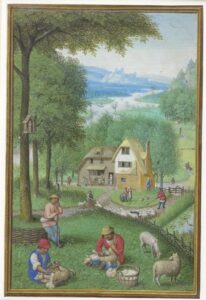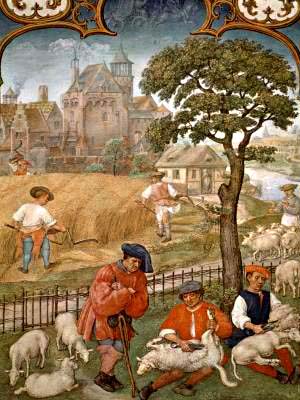The significance of manure from sheep, cattle and humans for soil fertility was well known in the medieval period. Manure could be bought, sold, borrowed and stolen and, of course, produced in situ. Sheep were commonly grazed on open upland pasture, sheepwalks, during the day and folded on arable stubble or ploughed land during the night. At its simplest, with seasonal variations, over time this practice would result in a net movement from the sheepwalks to the arable lands of essential nutrients such as nitrogen, phosphorus and potassium. This movement might be further enhanced if faeces were collected from the pasture and carted to the arable land.

If a farm were a simple closed system, this process would not result in any net gain or loss to the farm as a whole, just an internal redistribution. In reality, there would be losses and gains to the farm soil from external links. For example:
• Gains from atmospheric deposition, leaching from mineral deposits into springs, flooding, bought in fodder or manure
• Losses from water leaching into rivers, sold, (exported), goods such as fodder, wool, manure.
For long term soil vitality, and hence production, the losses should not outstrip the gains. This nutrient balance for any particular farm depends on many factors which will vary between farms. However, where a system of farms, such as the farms and granges held by Abbey Cwmhir, can be relatively self-sustaining by intra-farm trade, many of the gains and losses are more likely to balance out than for any single farm. The glaring exception to this is the collective endeavour to produce wool for sale.
Wool is rich in just those elements, (N, K, and P), that are essential for soil fertility. Indeed, wool can be used as an effective fertilizer.
So, two question arise:
• What was the effect of wool sales over centuries on the fertility of the soils on the lands of monasteries such as Cwmhir?
• Did sheep, and more generally animal, husbandry lead to a general depletion of essential nutrients in the open sheepwalks in favour of the enclosed fields?

